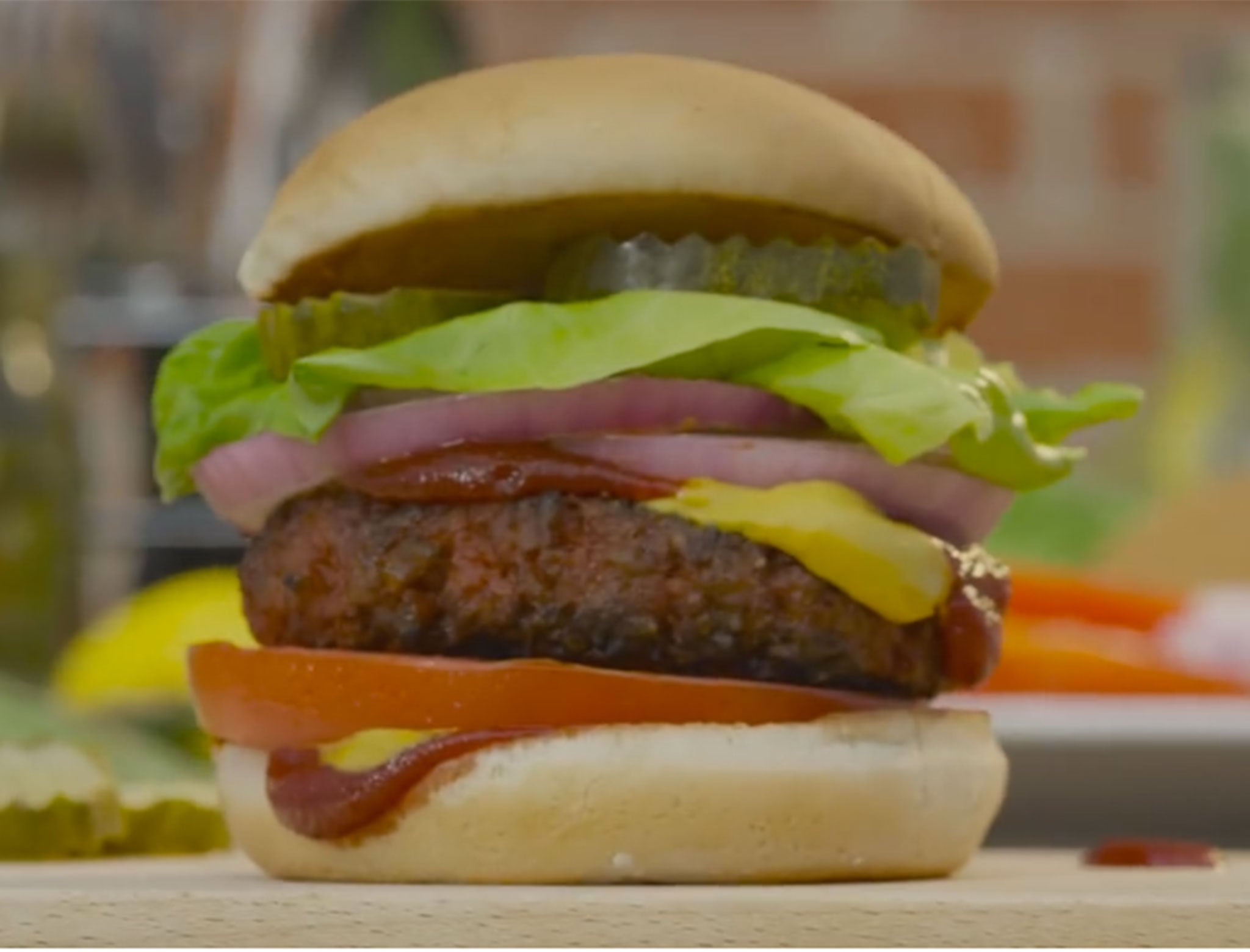Whole Foods introduces meatless burger that 'bleeds' vegetable juices
Billed as 'the most meat-like non-meat feat yet'

It was the steak dinners, Ethan Brown says, that changed his life. He had embarked on a career in the clean energy industry, a path befitting an environmentalist out to save the world. But the incongruity he perceived among his colleagues, who would lament environmental problems while eating beef, pushed Brown — a vegetarian since the age of 18 — in a different direction.
“We would go to conferences and sit there wringing our hands over all these [energy] issues, and then we’d go to dinner and people would order huge steaks,” Brown told Popular Science in 2013.
Brown left the energy industry and founded a startup called Beyond Meat in 2009, building on the work of University of Missouri food scientist Fu-hung Hsieh, a pioneer in “high moisture extrusion of fibrous meat analog” — making fake meat taste more like flesh, in other words. Beyond Meat achieved early hype with its Beyond Chicken strips, designed to obliterate memories of limp tofu dogs or crumbly veggie burgers.
Observing the strips shred into ligament-like strands at Beyond Meat’s factory in Columbus, Mo., Food Network star and author Alton Brown remarked at Wired in 2013, "It’s more like meat than anything I’ve ever seen that wasn’t meat."
Beyond Meat bills its latest creation, the Beyond Burger, as the most meat-like non-meat feat yet. It has been on sale for a single day — on Monday, in a Whole Foods in Boulder, Colo. — and is already being compared to, as the New York Times puts it, the "holy grail" of ersatz animal protein: A plant burger upon which a human carnivore would happily snack.
A Beyond Burger patty contains 20 grams of vegetable protein, mostly from peas, while lacking gluten and soy. If you prick a Beyond Burger, does it bleed? Yes, the company says, though its blood is pulverized beet juice. Beyond Meat took a completionist approach to its hamburger doppelganger: The Beyond Burger had to look, smell and feel like meat.
This was no easy task. Animal meat is not a uniform product, but plants, on the other hand, don’t come marbled with fat or sprout gristly connective tissues. (Even lab-grown beef patties, a different beast from Beyond Meat’s burger, have struggled to mirror the heterogeneous chow you’d buy from a butcher.) It was up to researchers like Stanford University structural biologist Joseph D. Puglisi, a scientific adviser to Beyond Meat, to devise a way to deposit plant fat in layers.
"We were able to get fat distributed throughout a patty — but in meat, fat is distributed in sheets," he told the New York Times.
Beyond Meat’s ability to replicate meaty layers out of plant matter is among the company’s greatest trade secrets — what puts it in a different category, perhaps, than the long line of faux meats that have come before. Biz Stone, one of Twitter’s founders and a Beyond Meat backer, described the company’s fake chicken to Fast Company as having a meaty mouth feel.
Celebrity vegans and vegetarians
Show all 25"It feels fatty and muscly and like it’s not good for you when you’re chewing it," Stone said in 2012. For a long-time vegan, it’s a little bit freaky.
(How closely a bite of the fake chicken, au naturel, mimics the real bird is a matter of debate; when tucked in a wrap, however, the game seems to change. New York Times’s Mark Bittman wrote in 2012 that Beyond Meat’s Brown fooled the food columnist "badly" in a taste test.)
This may seem like a lot of noise over mashed peas, unless you care about what Brown described in an interview with Business Insider last year as his four horsemen: animal welfare, climate change, human health and natural resources. Livestock — thanks to factors like cow burps — are a significant contributor of the greenhouse gas methane. Because crops take up about half as much space as livestock, a recent study in the journal Nature Communications concluded that a global vegetarian diet would be the most feasible way to feed 2050’s estimated population without expanding today’s farmland.
Livestock farms have direct detrimental impacts on human health as well. Due to widespread antibiotic use in livestock, the Centers for Disease Control estimates that 20 percent of antibiotic resistant infections originate from food. The demand for meat produced cheaply and quickly, too, may lead to poor working conditions; as one worker in the poultry industry told Oxfam America, the individual allegedly had to wear diapers on the job because bathroom breaks were verboten.
Brown says his goal with the Beyond Burger is nothing less than redefining meat to include plant protein, urging Whole Foods to sell the vegetable patties alongside their flesh-and-blood equivalents. On Facebook, some vegetarians expressed discomfort about the Beyond Burgers’s close proximity to what one commenter described as "little cellophaned packets of death". The company defended its power play for the meat aisle, as it wrote on Facebook, as “the opening shot in our bid to transform the meat case into the protein case.”
If such a complete transformation is the goal, the company will need to send in reinforcement burgers — the first batch sold out in an hour, according to Beyond Meat’s Twitter feed.
The burgers cost $5.99 for a pack of two patties. Beyond Meat says it plans to expand to Denver and Washington, D.C., soon, and beyond Colorado over the summer.
Copyright: Washington Post
Subscribe to Independent Premium to bookmark this article
Want to bookmark your favourite articles and stories to read or reference later? Start your Independent Premium subscription today.

Join our commenting forum
Join thought-provoking conversations, follow other Independent readers and see their replies